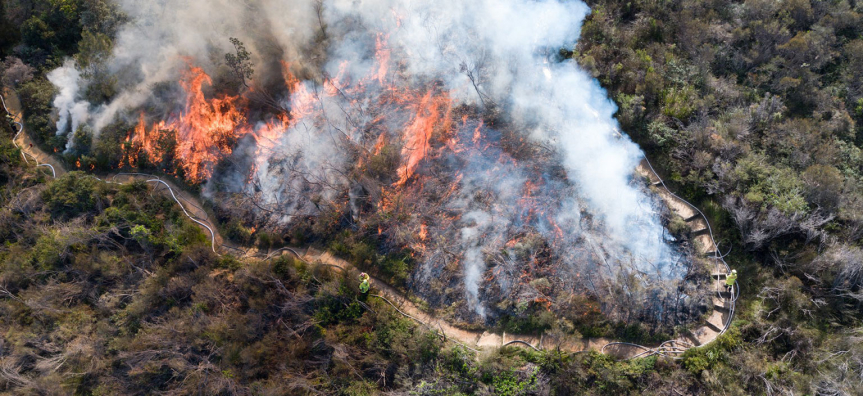
Fire is a natural part of the Australian Environment. With lightning and indigenous burning methods having shaped natural environment ecosystems over thousands of years, many of our plants are reliant on bush fire to regenerate and maintain their health.
Understanding why fires start and how they burn can help us prepare for and manage bush fires. How quickly a fire spreads and how intensely it burns depends on the type of fuel, topography and the weather. Bush fires usually occur where the weather is hot and dry.
The aspect of the landscape or the direction it faces can also affect how a fire moves. The aspect influences the type of vegetation that grows on the site and the amount of moisture levels it contains.
On the Northern Beaches, west facing slopes are the hottest and driest. The vegetation is more flammable, but these plants are more fire tolerant. South facing slopes are usually cooler, wetter and have less flammable vegetation. However, these plants are less fire tolerant and fires in these areas can be damaging to the vegetation.
